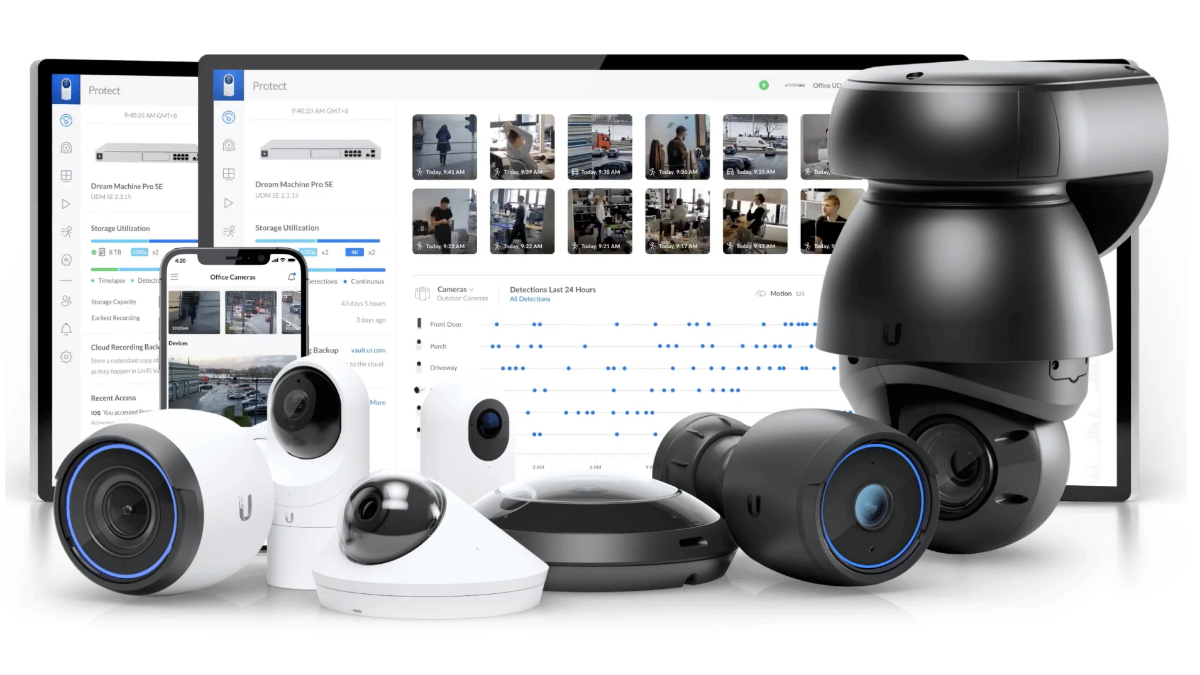
Effective employee monitoring requires finding an appropriate balance between legitimate business interests and respecting employee dignity. Carefully weighing the pros and cons allows organizations to implement video oversight programs judiciously. With well-designed policies and responsible data practices, video monitoring can positively assist many facets of operations in a range of industries when applied conscientiously. As we move into 2024, exploring the use cases for employee video monitoring with the best employee monitoring software for 2023.
Table of Contents
Improving Security and Safety
With threats of workplace violence, theft, and security breaches, video monitoring provides an extra layer of protection. Cameras allow employers to oversee access points, sensitive areas, and general employee safety. Alerts can notify managers of unauthorized visitors or suspicious behaviors so they can respond appropriately. This keeps honest employees safer and serves as a deterrent to would-be criminals.
Verifying Compliance
Video audits help ensure compliance with policies, procedures, and regulations in high-risk areas. Warehouse employees can be monitored handling heavy machinery or hazardous materials. Healthcare and food service workers can be observed following hygiene and contamination rules. Financial firms confirm protocols around transactions or confidential documentation are upheld. The goal is not to micromanage employees but rather to validate training and policies designed to keep everyone safe are being followed.
Optimizing Workflows
Understanding workflows through employee monitoring allows managers to identify redundancies, bottlenecks, and waste. Organizations can then improve processes for greater efficiency, productivity, and profitability. Mapping workflows enables leaders to validate layouts and staffing levels are optimal or adjust as needed. Monitoring also confirms whether employees are working as efficiently as possible or helps target additional training to improve individual performance.
Protecting Trade Secrets and IP
Video surveillance helps safeguard critical intellectual property and proprietary information. Monitoring access points for secure rooms, documenting interactions with third parties, and tracking removal of protected documents or data enables organizations to control sensitive assets. High-value resources deserve extra observation against theft, unauthorized sharing, industrial espionage, reverse engineering, or hacking. Surveillance supports legal protections when necessary as well.
Reducing Harassment and Discrimination
Employees may feel more empowered reporting issues knowing Footage can substantiate claims instead of someone’s word against another. The awareness of camera presence can deter harassers if they know behavior cannot be easily denied. Monitoring data also helps employers identify systemic issues requiring culture changes through additional policies, training, or leadership adjustments.
Pros and Cons
Here are the advantages and disadvantages of employee video monitoring:
Advantages:
Improves productivity by ensuring employees stay on task
Deters theft, violence, harassment, or other misconduct
Provides evidence if employees behave inappropriately
Ensures health and safety compliance
Disadvantages:
Invades employee privacy
Causes stress and pressure on employees
Requires significant investment in equipment and maintenance
Employees may find ways to evade monitoring
Can undermine trust and damage workplace culture
Key Considerations
While video monitoring has legitimate business purposes, ethical implementation matters greatly. Any surveillance program should balance employer needs against employee privacy rights. Restricting cameras in private spaces, establishing data access rules, communicating monitoring policies, and enabling consent options where possible help mitigate overreach risks. Video analytics for aggregating behaviors also help avoid personally identifying individuals unnecessarily.
As adoption grows, key questions leaders should ask include:
Is monitoring essential for the stated objective or are lesser measures available?
Are cameras, data access, and monitoring processes respectful of consent, dignity, and wellbeing?
Do policies explain why video is needed and how data is secured, restricted, and retained?
Ongoing risk assessments and ethical reviews will keep programs focused narrowly while allowing video to meet crucial business, safety, and security needs entering 2024.
Conclusion
Video monitoring of employees continues trending higher across office and field environments alike. Viability keeps improving as cameras, data networks, video analytics, and storage costs come down while capabilities go up. Used ethically, 2024 sets the stage for increased video adoption to verify compliance, analyze workflows, encourage safety behaviors, protect critical assets, and deter misconduct. But any video program demands meticulous justification aligned to specific risks and performance gaps. Employee dignity along with consent options where feasible remain imperative as well. With conscientious policies and responsible oversight, video monitoring can deliver substantial benefits for both employers and staff over the next year and beyond.